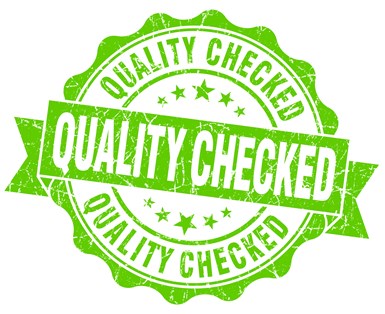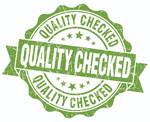
A well-implemented quality management system can increase customer confidence. Photo Credit: iStock
The certification of a company’s quality management system (QMS) to a recognized international standard proclaims the achievement of an effectively implemented management system whose process controls are adequately robust. Certification reassures customers of its ability to deliver quality products as specified consistently.
This, in turn, heightens customers’ confidence that they can rely on the quality of your products and services over time, relieves the company of the burden of supplemental customer audits (sometimes) and helps improve operations. Some of the observable traits of a well-implemented and maintained QMS include defined and integrated processes, risk-based thinking, allocation of resources, capacity to understand and fulfill customer requirements, a well-managed supply chain, monitoring of key performance indicators (KPIs), and well-maintained and protected documentation.
The Case for QMS
ISO 9001 is the most generic QMS model, so we’ll use it as our reference point. ISO 9001:2015 5.1.1 states that top management must ensure “the integration of the quality management system requirements into the organization’s business processes.” Essentially, this means that the QMS practices must align with how the business operates. This is not a suggestion; it is a requirement.
Implementing a QMS is not a paper-shuffling exercise and its maintenance is not busy work. The relevant risk, process definition, resource allocation and process monitoring are the business of the business. You’re already doing a lot of this stuff.
Well-controlled design processes can mitigate costly re-engineering activities. Well-defined manufacturing processes can decrease downtime and reworks. Supply chain management can ensure the timely delivery of quality materials. A well-laid-out factory can decrease accidents and optimize workflow. Consistent monitoring helps to head off declining trends before they become epic crashes.
Implementing a QMS is not a paper-shuffling exercise and its maintenance is not busy work. The relevant risk, process definition, resource allocation and process monitoring are the business of the business.
Negative consequences cost money. They imperil your relationship with your customers, erode your reputation and endanger your viability in the marketplace. They can sound your company’s death bell. Being responsive and resilient diminishes that likelihood. A good QMS makes financial sense and can help get you where you need to be.
With a well-implemented QMS, there’s an interrelation of processes. There is an organizational awareness of interactions and interdependencies. We can follow the chain from customer specifications to questions about what materials will be needed, how much time will be required and the potential need to acquire new tooling or technologies.
The design process might have to rely on the talents of the purchasing staff in qualifying potential new suppliers. Engineers might also need to investigate new measuring or test equipment, which, in turn, involves the quality control department and the calibration process. Manufacturing engineers will look at capacity and shop training requirements. Warehouse space, software, material traceability, documentation and environmental controls will probably all have to be considered.
A risk assessment might even yield the wise business decision to say “no” to a large project because of the load it would place on limited resources — with a real risk of endangering the company’s reputation with existing customers.
The corresponding ISO 9001 clauses might look like this:
- Customer specifications (8.2.2)
- Materials needed (8.4.1)
- Time, new tooling or technologies (7.1)
- Risk assessment (6.1)
- Design process (8.3)
- Qualifying potential new suppliers (8.4.1)
- Measuring or test equipment (7.1.5.2)
- Manufacturing (8.5.1)
- Shop training (7.2)
- Warehouse space (8.5.4)
- Software (7.1.3)
- Material traceability (8.5.2)
- Documentation (7.5)
- Environmental controls (7.1.4)
Managing changes (6.3) to these 14 items is essential to maintaining control against new problems.
The rewards of a good QMS should include optimized processes, on-time delivery, satisfied customers, reliable information for planning and a healthier bottom line.

A certified quality management system is more than a certificate on the lobby wall. Photo Credit: iStock
The Rewards of QMS
The rewards of a good QMS should include optimized processes, on-time delivery, satisfied customers, reliable information for planning and a healthier bottom line. The certificate on the lobby wall (despite the customers’ clamor) is just icing on the cake.
However, certification does have its value. It means that an independent, industry-specific professional certification body has assessed the organization’s QMS. The assessment is conducted against the requirements of a standard (such as ISO 9001) through a rigorous review of documentation and witness of activities and other objective evidence, all demonstrating consistent conformance. That consistency is important because it engenders a high confidence that the QMS has been sustained and that the customer can reasonably be assured of its continued reliability.
Without the certification body, there’s no unbiased appraisal and no evidence that competent individuals have conducted a thorough assessment. For example, some organizations self-declare that they are ISO 9001 compliant. The phrase is, at best, not dishonest. They say, “We have a pretty good system. We aren’t certified. But we believe that we comply with ISO.” While it is a truthful statement, it still doesn’t carry much weight in the certification world.
Certification audits are conducted by auditors who have vetted their qualifications by the certification body (CBs) or registrars. Auditors are required to be trained and go through a provisional period in which their skills are witnessed by the certification body or by training providers. Auditors undergo training that covers audit planning, developing checklists, time management, auditor attributes, interviewing techniques, evidence sampling, process approach, statistical methods, comprehension of requirements, writing up findings, generating audit reports and post-audit follow-up. Auditors must also demonstrate competence in the organization’s field or industry.

Certification audits are conducted by auditors who have vetted their qualifications by the certification body. Photo Credit: Getty Images
An individual with only a healthcare background does not have the requisite competence to assess a plastics manufacturing facility. The CBs are required by their accrediting bodies to ensure auditors have the necessary auditor skills and experience in their clients’ various fields.
Third-party assessors (individuals doing certification audits) must ascribe to a code of conduct that includes objectivity, truthfulness, confidentiality and freedom from personal interest that would bias the outcome. Auditors are required to be upfront about the fact that they agree not to consult during the audit or for a defined period afterward.
Suppose your customers require you to be certified. In that case, they probably expect that you have a robust and effective QMS they can rely on to consistently provide them with great products on time and to their specifications. Suppose you are already able to fulfill their expectations. In that case, there’s a good chance that your existing management system is far along the path to compliance with ISO 9001 or a comparable QMS standard. Certification might be more attainable than you thought.
Related Content
The Critical Role of Management Representatives in ISO 9001
In ISO 9001 quality management systems, the Management Representative (MR) plays a crucial role. While the 2015 version of ISO 9001 no longer mandates this position, having a trusted management member serve as an MR remains vital for streamlining operations and maintaining quality standards.
Read MoreThink Safety: Eliminate Hazards Throughout the Shop
The tooling community is taking advantage of new products for safer mold shops and molding facilities.
Read MoreVelosity Earns EcoVadis Bronze Medal for Sustainability Performance
Rating reinforces Velosity’s efforts to align with global sustainability standards and customer expectations.
Read MoreDigital Moulds and BMW Group Drive Mold Performance Visibility Through Digitalization
Digital Moulds partners with BMW to digitize mold monitoring, enhancing performance, transparency and global oversight.
Read MoreRead Next
Creating an Effective Supplier Management Scorecard
Keeping Up with ISO columnist, Lewis Yasenchak wants to help moldmakers measure performance metrics across their supply chain with this quick-read. How often do you check your supplier management scorecard?
Read MoreTop 10 Topics to Cover During an ISO 9001 Manufacturing Audit
Take a look at this practical hands-on approach to conducting a quality audit.
Read MoreHow To Get Buy-In from Your Team for ISO 9001
Here are four tips for getting your team on board once you’ve decided to become ISO 9001 certified.
Read More






















